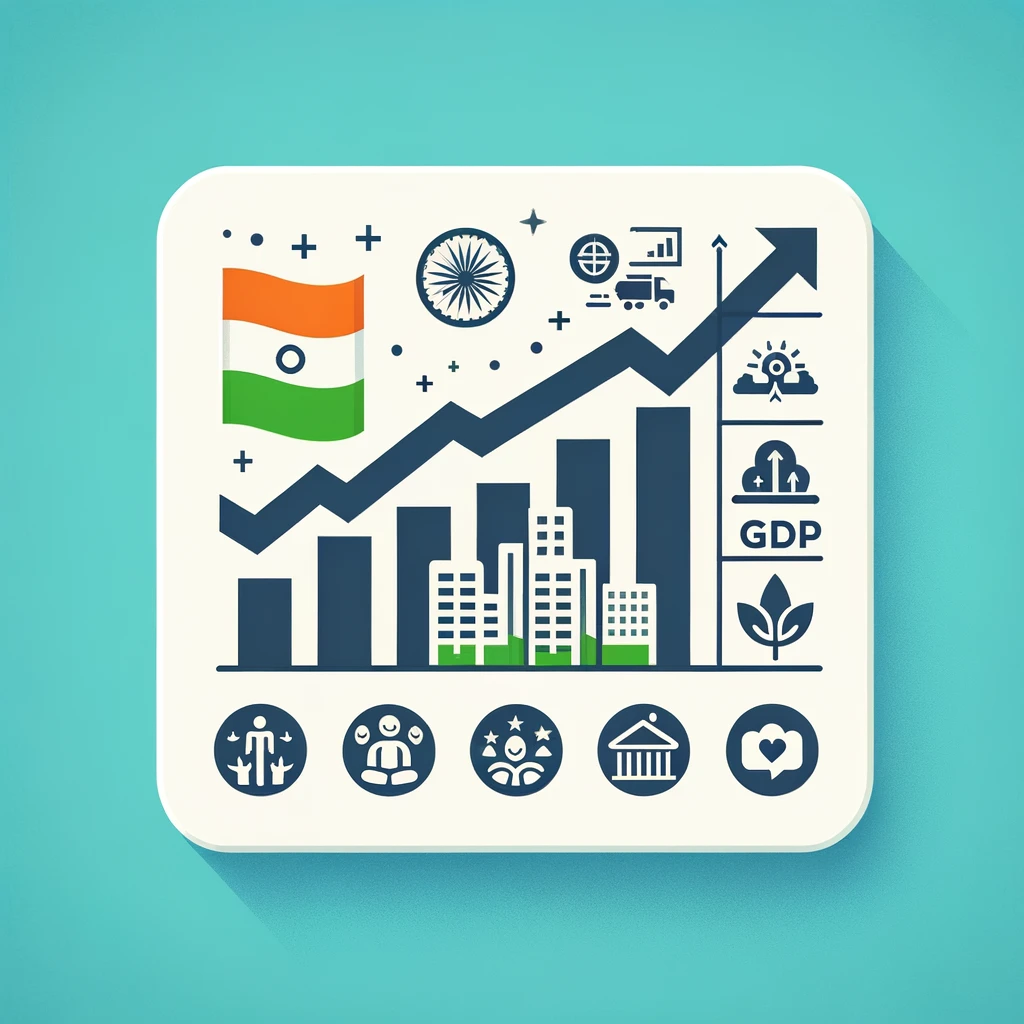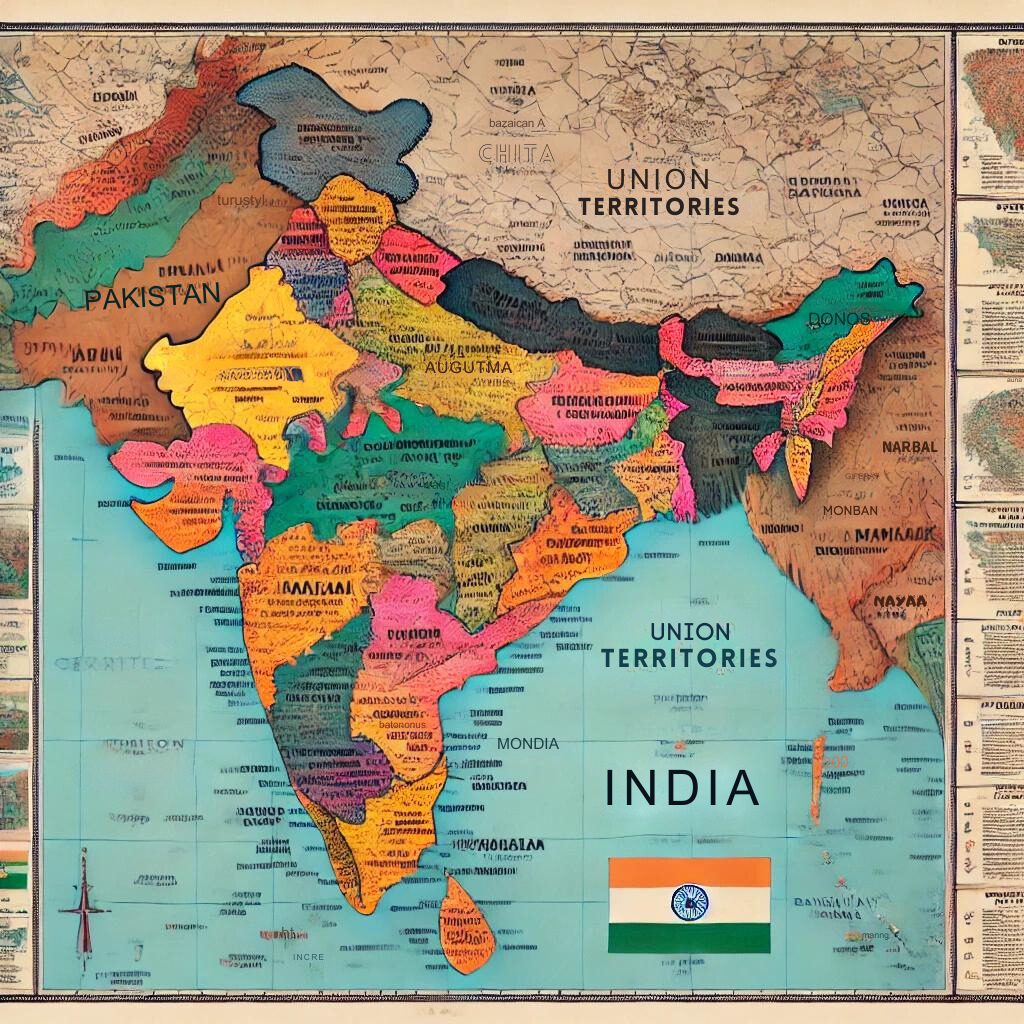
The Economic Survey 2023-24 was tabled in Parliament by Union Minister for Finance and Corporate Affairs, Smt. Nirmala Sitharaman on 22 July 2024.
Highlights
State of the Economy
The Economic Survey 2023-24 projects a real GDP growth of 6.5–7%, with market expectations on the higher side. Despite external challenges, India maintained macroeconomic stability, growing by 8.2% in FY24.
- Gross Value Added (GVA) grew by 7.2%, and net taxes at constant prices grew by 19.1%.
- Retail inflation decreased from 6.7% in FY23 to 5.4% in FY24.
- The Current Account Deficit (CAD) improved to 0.7% of GDP from 2.0% in FY23.
- Tax collection was 55% from direct taxes and 45% from indirect taxes.
- The government ensured free food grains to 81.4 crore people.
Monetary Management and Financial Intermediation
- India’s banking and financial sectors performed well in FY24.
- The RBI maintained a steady policy rate, keeping inflation under control.
- The Monetary Policy Committee (MPC) held the policy repo rate at 6.5%. Credit disbursal by
- Scheduled Commercial Banks (SCBs) grew by 20.2% to ₹164.3 lakh crore.
- Broad money (M3) growth was 11.2% YoY.
- The Insolvency and Bankruptcy Code (IBC) resolved 31,394 corporate debtors involving ₹13.9 lakh crore.
- The market capitalisation to GDP ratio is the fifth largest globally, and the microfinance sector is the second largest after China.
Prices and Inflation
- Retail inflation was maintained at 5.4%, the lowest since the pandemic.
- The government reduced LPG prices by ₹200 per cylinder and petrol and diesel by ₹2 per litre.
- Food inflation increased from 6.6% in FY23 to 7.5% in FY24 due to extreme weather.
- The RBI projects inflation to fall to 4.5% in FY25 and 4.1% in FY26.
External Sector
India’s external sector remained strong despite geopolitical challenges. The World Bank’s Logistics Performance Index ranked India 38th in 2023. Services exports grew by 4.9% to USD 341.1 billion. India is the top remittance recipient with USD 120 billion in 2023. The external debt to GDP ratio was 18.7% at the end of March 2024.
Medium-Term Outlook
Key policy areas include job creation, agriculture potential, MSME bottlenecks, green transition, and tackling inequality. The Amrit Kaal growth strategy focuses on private investment, MSME expansion, agriculture growth, and education-employment bridging.
Climate Change and Energy Transition
India is the only G20 nation aligned with 2-degree centigrade warming. Renewable energy capacity increased, and energy efficiency improved. The emission intensity of GDP reduced by 33% from 2005 levels. The government issued sovereign green bonds worth ₹36,000 crore in 2023.
Social Sector
Welfare expenditure grew at a 12.8% CAGR. The Ayushman Bharat scheme generated 34.7 crore cards and covered 7.37 crore hospital admissions. The Poshan Bhi Padhai Bhi program aims to develop the world’s largest preschool network. The Vidyanjali initiative enhanced education for 1.44 crore students.
Employment and Skill Development
The unemployment rate declined to 3.2% in 2022-23. The EPFO payroll additions doubled from 61.1 lakh in FY19 to 131.5 lakh in FY24. The gig workforce is expected to expand to 2.35 crore by 2029–30. Direct public investment of 2% of GDP could generate 11 million jobs, with 70% for women.
Agriculture and Food Management
The agriculture sector grew at 4.18% annually over the last five years. Total credit disbursed to agriculture was ₹22.84 lakh crore. 7.5 crore Kisan Credit Cards (KCC) with a limit of ₹9.4 lakh crore were issued.
Industry
Industrial growth was 9.5% in FY24. Manufacturing sector grew at 5.2% annually, driven by chemicals, transport equipment, and pharmaceuticals. PLI schemes attracted ₹1.28 lakh crore of investment, generating ₹10.8 lakh crore in production and employment for 8.5 lakh people.
Services
The services sector contributed 55% to GVA. Services exports constituted 4.4% of global exports. Aviation and real estate sectors saw significant growth. The tele-density increased to 85.7%, and internet density reached 68.2%.
Infrastructure
Public sector investment significantly funded large-scale projects. The pace of NH construction increased to 34 km per day. Capital expenditure on railways increased by 77% in the past five years. New terminal buildings at 21 airports increased passenger capacity by 62 million annually.
Climate Change and India
Current global climate strategies are seen as flawed. India’s approach emphasizes a harmonious relationship with nature. Mission LiFE promotes mindful consumption to address overconsumption.


